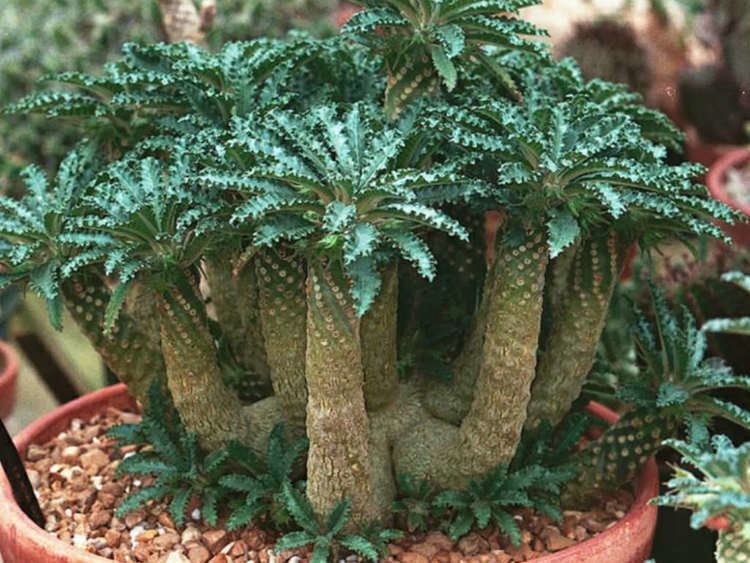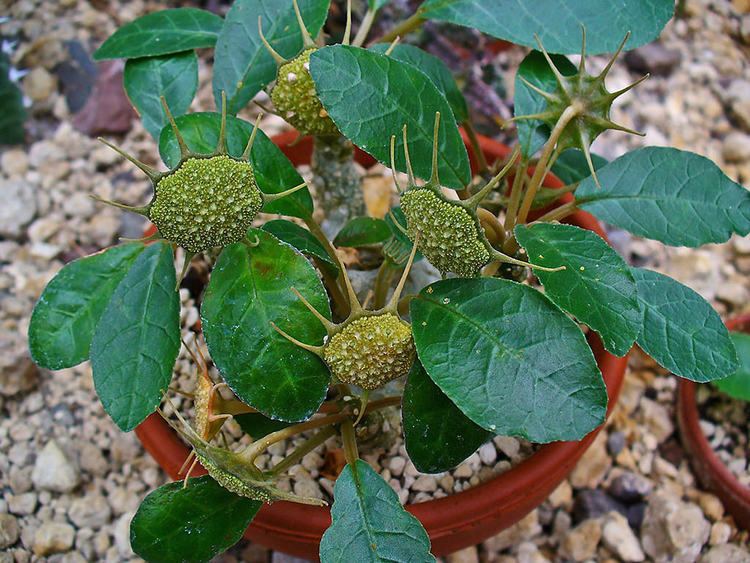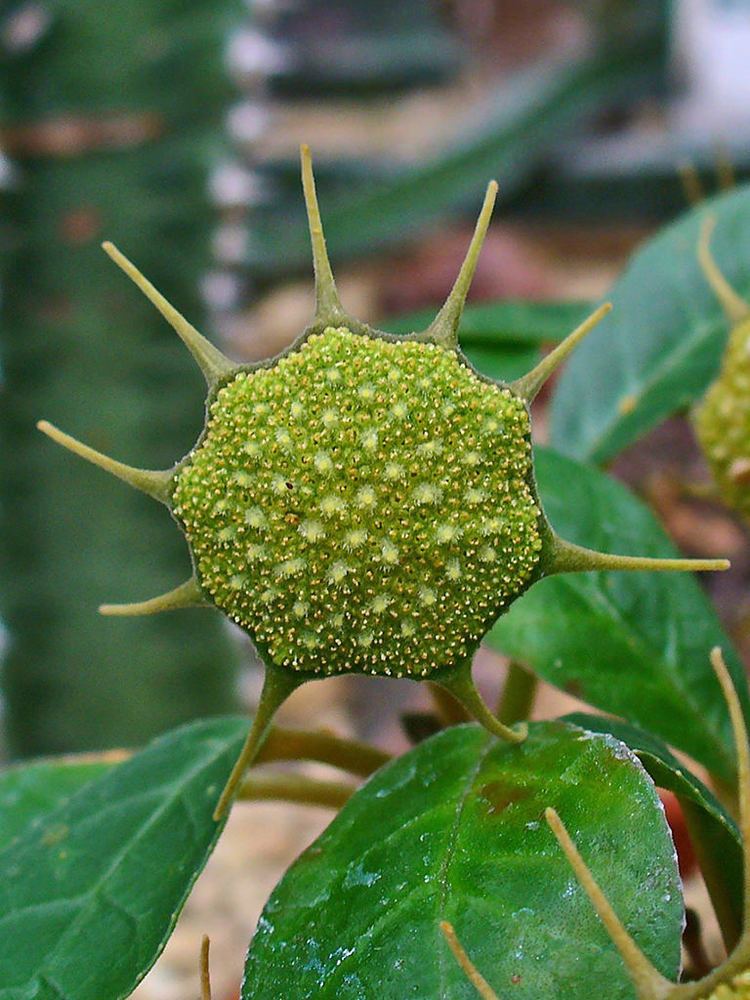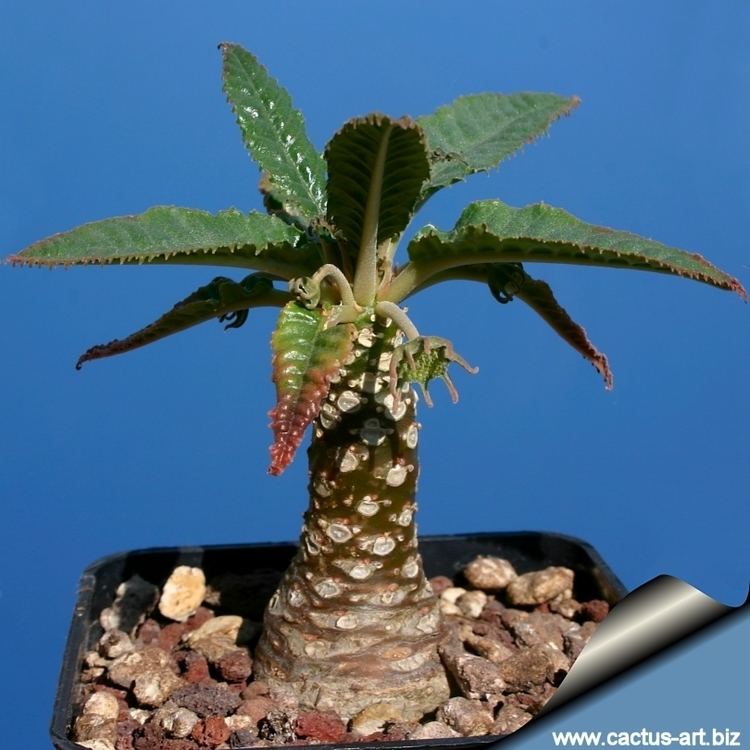Scientific name Dorstenia Rank Genus | ||
 | ||
Lower classifications Dorstenia foetida, Dorstenia contrajerva, Dorstenia brasiliensis, Dorstenia elata, Dorstenia bahiensis | ||
Dorstenia gigas plants seeds for sale
Dorstenia is a predominately Old and New World plant genus within the family Moraceae, but there is one Dorstenia species that is located in Indonesia and South Asia. There are 105 species within this genus that are fairly equally distributed between the Afrotropics and Neotropics, second only in number to the Ficus genera in Moraceae, but Dorstenia is unique when compared to other members of the Moraceae because of their extremely diverse growth habits and life forms. The majority of the Moraceae is woody perennials, while Dorstenia is dominated by herbaceous, succulent, or suffrutescent perennials, and only 10% exhibit the typical woody habit of the Moraceae. Dorstenia also have a striking reproductive structure composed of clusters of bisexual flowers on disc-shaped receptacles that are often adorned with variable size and shape bracts. Like most members of the Moraceae, Dorstenia have drupe fruits like peaches (peaches are not a member of the Moraceae), but another special feature of Dorstenia drupes is that they explode to release the seed. The seeds are usually small with a minuscule endosperm. The Dorstenia genus is also well known by indigenous people in the tropics as a medicinal plant with numerous flavonoid compounds that have anti-microbial, anti-reverse transcriptase, and anti-inflammatory effects.
Contents

Dorstenia is part of the Dorstenieae tribe of the family Moraceae, and all three levels of classification are monophyletic from chloroplast and nuclear DNA phylogenies, with morphological characters that also support. The family Moraceae is a part of the monophyletic Rosales order, and within this order the Moraceae is most closely related to the Ulmaceae, Cannabaceae, and Urticaceae families of plants. Fossils of Ficus and Morus fruits have been found on the African continent, and are used to approximate the origin of family Moraceae to a maximum of 135 million years ago. In a recent study using fossil fruits, Bayesian molecular dating, and maximum likelihood, researchers attempted to reconstruct the ancestral history of Dorstenia with ITS (internal transcribed spacer) sequences from ribosomal DNA of 35 Dorstenia species and seven out-group species from the different tribes within the Moraceae. The goal was to resolve a long-standing issue within Dorstenia of if this genus diverged and radiated prior to the split of Africa and South American about 105 mya, and members of this genus are on separate continents by vicariance, or if this genus diverged post split and Dorstenia became established in the Neotropics by seed dispersal.

This study produced an interesting phylogeny that revealed an initial old world divergence around 112.3 mya, divergence and radiance of new world Dorstenia at 67.2 and 30.3 mya respectively, and an old world group nested within the new world that radiated around 13.6 mya. The results of this phylogeny do not determine if vicariance or seed dispersal is the cause behind the old and new world populations of Dorstenia; however, it does pose several hypotheses regarding how the new world population came about as well as how three old world Dorstenia species are nested in the new world clade of the phylogeny. Due to the small endosperm that is typical of Dorstenia seeds, it is unlikely that seed dispersal by animals is the reason for the new world and reemerged old world species. However, it is possible that the new world population emerged by transport over the Beringia, established populations all throughout the North and South Americas, and when climate conditions changed and North America was no longer tropical or subtropical that the North American population died out, leaving only the New World population seen today in South America. This idea also allows for the Old World species nested within the new world by Dorstenia populations established in America returning to Africa by Beringia. For this hypothesis to receive more credence, fossil Dorstenia plants in North America would be needed.

Dorstenia is named in honor of the German physician and botanist Theodor Dorsten (1492–1552).
Species in this genus were a source of the herbal preparation contrayerva.
Dorstenia care
Selected species


